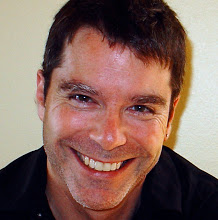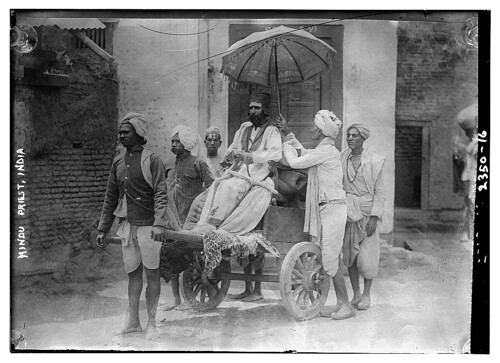“I do what I do because I hate ugly words,” says Anthony Shore of Operative Words.

Continuing our series on naming (check out our interviews with Nancy Friedman and : : CRONAN : :), we spoke with Bay Area-based professional namer and logophile, Anthony Shore. Anthony has a background in linguistics, typesetting, copywriting, software marketing, and product management, and has named products such as the Lytro camera, the Fanhattan entertainment app, and Pause beverages.
Anthony tells us how he got into naming, the method behind the madness of the process, and about one very badly named shoe.
You can also find Anthony on LinkedIn and Twitter.
What got you interested in the naming business?
The first book I became fascinated by was the American Heritage Dictionary, specifically the section on Proto-Indo-European roots. I’d spend hours going over these roots from a hypothetical language spoken 5,000 years ago that gave rise to Latin, Greek, English, German, Hindi, Sanskrit, all these languages. I was fascinated that one little root could end up meaning so many different things in so many different languages.
When I was college, I studied artificial intelligence and did some natural language processing and Lisp. From linguistics, I got into a different kind of obsession with words in typesetting. It’s not too far related from the world of computational linguistics in that typesetting, back when I was doing it, was photomechanical. You’d work on a terminal that was not WYSIWYG and would enter codes to format the type.
My obsession with the written word continued and I ended up getting another job at an ad agency who needed a typesetter. At that point I got my foot in the door doing copywriting and ad conceptualization, then moving on to desktop publishing. Later, I moved on to a wine distributor, typesetting wine list publications and looking at the taxonomy of wines and restaurants, helping to organize and present their wine lists.
Next I moved onto a software company, where I became a marketing communications generalist, and then Landor Associates. I started as a naming manager, and eventually became global director of naming and writing, responsible for all word work and expressing strategy.
What types of customers and clients do you work with?
I’ve worked with well over 200 companies, and in every possible industry there is. Consumer packaged goods, wine and spirits, industrial and manufacturing, insurance, healthcare, and a lot of technology. There’s a great need for names in technology because technology is so prolific. Obsolescence is built into the category. Because there’s so much creativity, generation, and production in technology, there are many naming opportunities.
How do you work with your clients in the naming process?
Coming up with the story and telling that story is in some ways the most important part of naming, because what you’re doing is looking for different ways to express the essence of a brand, company, or product.
An important element is what makes the company different, and what their personality is as a company. This is something you can only understand by paying attention to the people in the room. You can come up with a great name that has logic and rationale, but if it doesn’t reflect who the people are in the room, it’s never going to get adopted.
The name development will start very broad, a mile wide and an inch deep. The second round is an inch wide and a mile deep, and focuses on the types of names that are really going to resonate with [the client]. When you begin creative, you have some idea of what’s going to work for the client, but you never know exactly what their reactions will be until you present the names.
That’s also why it’s dangerous to have proxies on naming projects. If a VP has a senior manager or director stand in for them, that’s a very dangerous situation because that person doesn’t really know how their superior is going to react to a specific word.
Something else I do is show names that are both on strategy and that violate strategy. We may all agree what looks good on a white board strategically, but the reality is there may be a great name that takes a different approach. The name never lives in isolation. There’s always context around the name that can help support other strategic elements. A name might follow a strategy that is different than the one they thought they wanted.
What are some resources that you use?
I like using all kinds of resources, the more the better. I’ll use websites like Wordnik, OneLook, Rhyme Zone, and Word Menu software.
I’ve been doing a lot of work in corpus linguistics, using Sketch Engine for example. It’s the ultimate concordance of words. Typical databases have over a billion text entries in them. So if I’m looking for an idea like love, I can be exposed to 10,000 words that have appeared near the word love. There might be a series of syntactic structures like love of blank, and then suddenly you’ll find a whole list of things that people love, like music, the ocean, neighbor or laughter.
I’ll use Wordnik to help me find words related to things I’m working on. I recently named an interactive children’s book line Wanderful. In the exercise that eventually led to Wanderful, I was looking at the world of children. There are great lists on Wordnik that have to do with kids. Words my two-year old daughter says. All the names of My Little Ponies. I’ll start with one list on Wordnik, which might lead to ten new lists.
I might be looking for the word fun. I’ll open all the lists that contain the word that look interesting to me. From one of those lists, I might find a word like wonder, and look at all the lists that contain the word wonder. Then I’ll enter the word wonder into something like Rhyme Zone, looking for words that rhyme with wonder, such as thunder. I’ll put thunder into OneLook and find all the words that combine with thunder, like thunderclap. I’ll substitute wonder for thunder. Wonderclap. It’s a very generative approach to finding natural, fun, unique brand news. And it’s been very fruitful as a technique.
I try to algorithmize my work. Because I like computers and think analytically, and I’m a linguist and I like looking for rules of language, I create formulas that produce creative, good, natural names.
What are some mistakes you’ve seen companies make in terms of naming?
There are names out there that are thought to be very bad. There’s the story of the Chevy Nova. The myth goes that it means “It doesn’t run” in Spanish, but actually the Chevy Nova sold very well in Latin America.
Then there was the woman’s running shoe Reebok launched called the Incubus. An incubus is a demon that attacks women in their sleep, and so naming a shoe after this demon: bad idea. You hardly need a naming expert to tell you that.
It’s pretty easy to get a large group of people to agree on a word that doesn’t mean anything because there’s nothing to disagree with. The hardest words to sell are those with the greatest emotional resonance and affect on people.
The naming process is more than about taking a bunch of roots that mean love and tacking on prefixes and suffixes, although that’s also a part of the creative development process. The other part has to do with looking at words that are deeper and richer because those are the names that are going to give the client much more to work with and have much more emotional resonance.
Having a more memorable name means the client will need to spend less money on media to have their name remembered. Words that are polysemous, that have many meanings and associations with them, are the ones that are more memorable. But it’s also those words that are hardest to build consensus around.
I recently saw a company change their name from Watson to Actavis. Maybe they were legally compelled to change the name Watson, but Watson is fantastic. It’s human and rich. It has a history and a kind of mythology. This other name is pretty much an empty vessel. Maybe there’s some Latin root that you can latch onto. However, if there was a legal reason they had to change the name, I have compassion for that.
I also have compassion for the issue regarding international brand names. People feel differently about names in different parts of the world. Like Steve Martin said, the French have a different word for everything. For instance, in Europe they generally like these more empty-vessel, Latinate-sounding names. Those kinds of name speak to them more because English is not their primary language.
In Asia, the sound and the backstory of a name are more important than whatever obvious meaning is communicated by the word itself. You can spin any story, no matter how far removed it is from the name.
What are some other challenges namers might face?
Naming has become a specialized industry in part because of the proliferation of trademarks and the difficulty of finding a good name that you can use without infringing on another company’s trademark.
People have said all the good names are taken, and that’s absolutely not true. There are great names out there waiting to see the light of day. It’s only the obvious names that are taken. Finding the non-obvious names requires skill, diligence, and focus, as well as expertise in things like trademark screening – all of these have compelled the birth of this new industry.
I believe, however, that great names can come from anywhere. There are fantastic brands and brand names out there that were never developed by a naming expert, like Virgin, Google, Apple, and Yahoo! These weren’t developed by some naming geek but by creative people who found the right word that captures the essence and the spirit of their organization.





